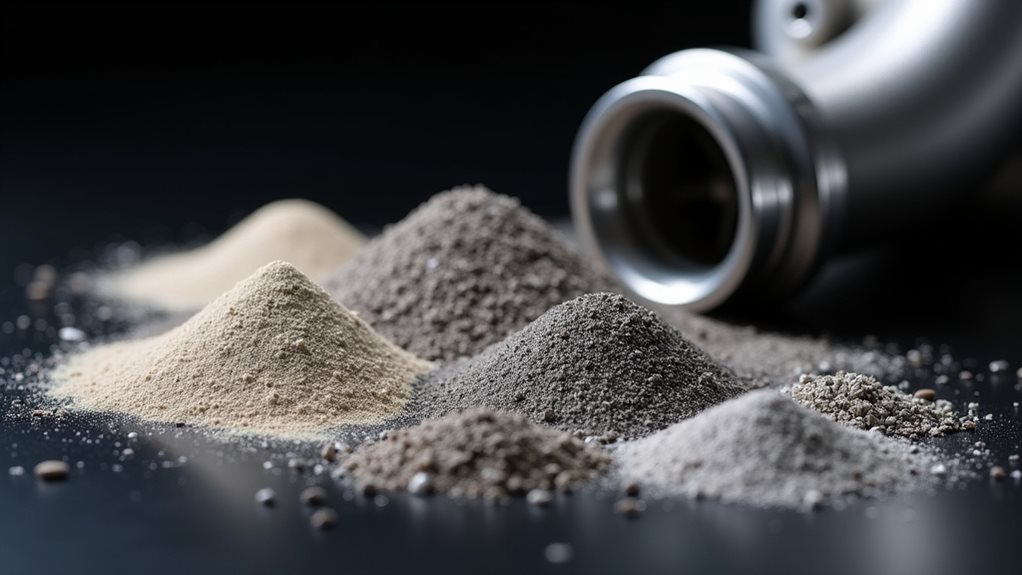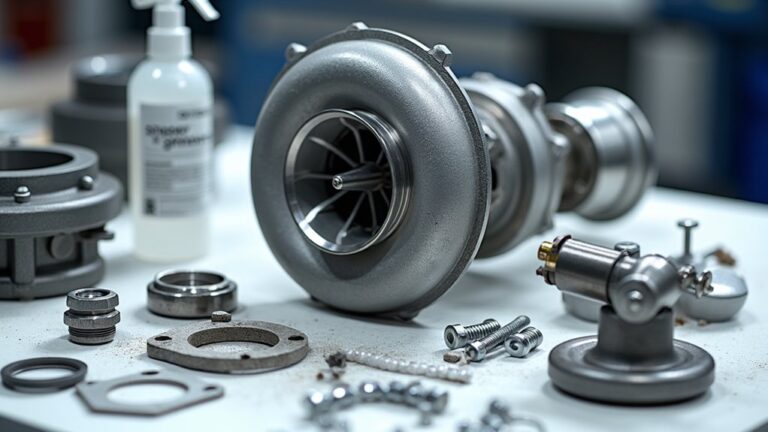You’ll want to use marine grit ranging from #10 to #20 mesh size for turbocharger dry cleaning, with grain diameters spanning 420 to 2,830 micrometers. The sweet spot? Nominal grain size #8 walnut shell grit, which I’ve found strikes that perfect balance between aggressive carbon removal and gentle treatment of delicate components. Choose finer grits (#16-#20) for light deposits, coarser (#10) for stubborn buildup, and you’ll discover how proper selection transforms your cleaning effectiveness.
Understanding Marine Grit Composition and Material Properties
When I first started working with turbochargers, I made the rookie mistake of thinking any abrasive material would do the job – boy, was I wrong! 😅
Marine grit, which is primarily crafted from ground walnut shells, represents a game-changing approach to turbocharger maintenance because these natural shells possess the perfect balance of cleaning power and gentle touch that your expensive equipment desperately needs.
What makes walnut shells so remarkable is their soft abrasive properties, which clean thoroughly without scratching delicate turbocharger components like metal grit would.
You’ll find marine grit recognized in the IMPA catalogue, guaranteeing consistent quality standards across the maritime industry.
The size range typically varies from #10 to #20, giving you flexibility for different cleaning applications while remaining environmentally safe.
Standard Grain Size Classifications for Turbocharger Applications
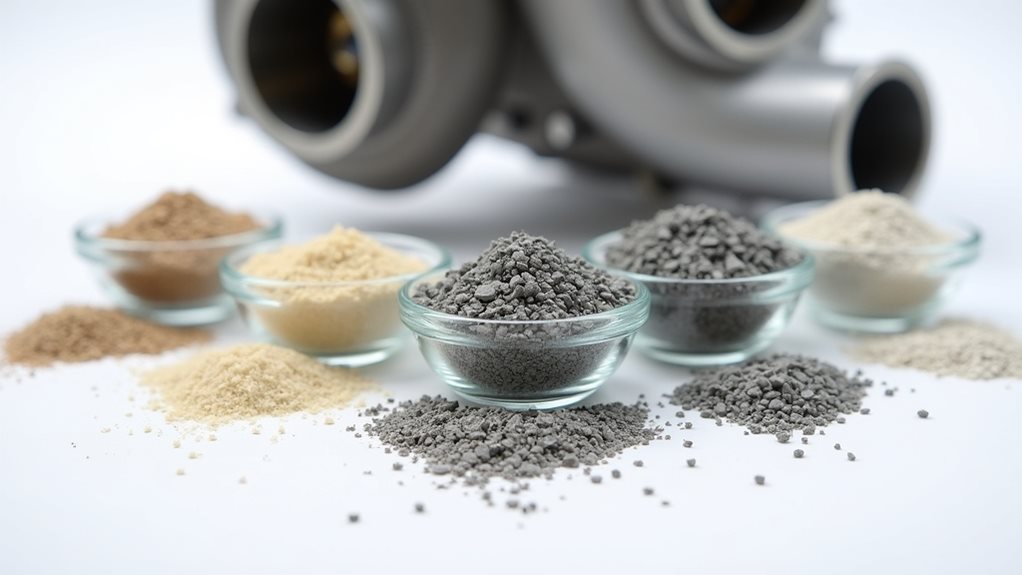
When you’re selecting marine grit for your turbocharger cleaning system, understanding mesh size standards becomes your roadmap to success, much like how I learned the hard way that “bigger isn’t always better” after watching a colleague damage delicate turbine blades with oversized particles.
You’ll find that manufacturer recommended specifications typically fall within that sweet spot of 12-34 mesh range, which translates to grain diameters between roughly 420-1400 micrometers, giving you the perfect balance of cleaning power without the destruction.
Trust me, following these standardized classifications isn’t just bureaucratic paperwork – it’s your insurance policy against costly repairs and the difference between a seamless-running engine and an expensive paperweight sitting in your engine room.
Mesh Size Standards
Although I’ve watched countless maintenance crews struggle with choosing the right grit size, you’ll find that understanding mesh size standards becomes surprisingly straightforward once you grasp the fundamental relationship between grain diameter and cleaning effectiveness.
When you’re selecting marine grit for turbocharger dry cleaning, the mesh size directly determines your success rate – and trust me, I’ve seen too many expensive mistakes from rushing this decision.
You’ll typically work within the #10 to #20 mesh range, though most experienced technicians swear by the nominal grain size of #8 (IMPA code 232978) for consistent results.
The grain size affects everything from cleaning thoroughness to component safety, so don’t underestimate this choice. Effective cleaning depends on matching your turbocharger’s specific requirements with the appropriate mesh specifications.
Manufacturer Recommended Specifications
The engineering manuals from major turbocharger manufacturers like MAN, Wärtsilä, and Caterpillar tell a remarkably consistent story about grain size specifications, and I’ve learned to treat these recommendations as gospel after witnessing one too many warranty claims get denied over improper cleaning media.
You’ll find that manufacturer specifications consistently point toward nominal grain #8 marine grit for ideal turbocharger cleaning, and there’s solid science behind this choice. This grain size strikes the perfect balance between aggressive carbon deposits removal and gentle treatment of delicate turbine components, guaranteeing your cleaning process boosts efficiency without compromising longevity.
I’ve seen engineers ignore these specifications thinking they knew better, only to discover that manufacturers design their recommendations around extensive testing, material compatibility studies, and years of field experience that you simply can’t replicate in a weekend experiment.
Walnut Shell Grit Specifications and Mesh Dimensions
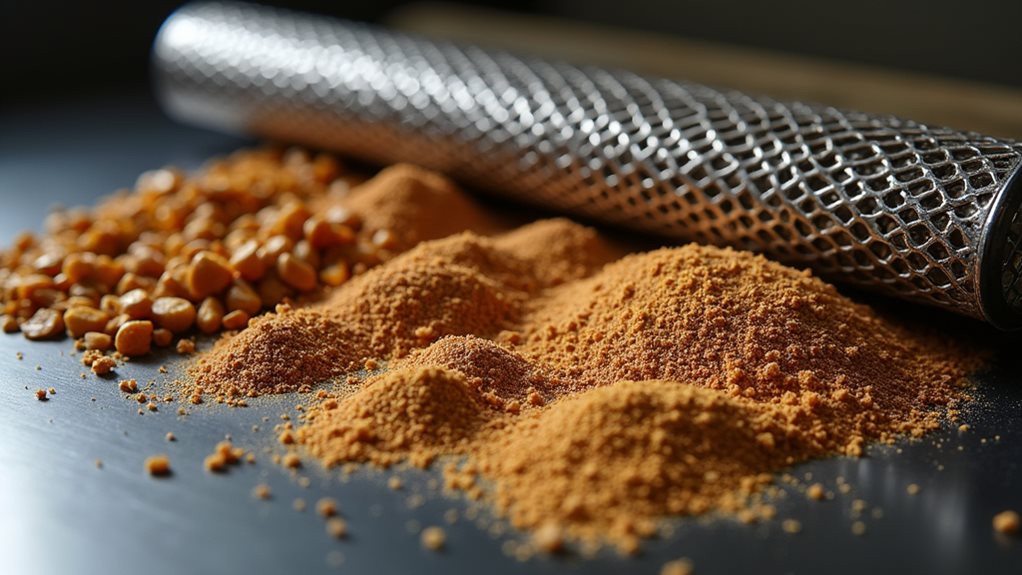
Precision becomes your best friend when you’re selecting walnut shell grit for turbocharger cleaning, and understanding mesh specifications can mean the difference between a successful maintenance job and costly equipment damage.
You’ll find marine grit available in mesh sizes from #10 to #20, with diameters spanning approximately 2.830μm to 840μm – that’s quite a range!
The sweet spot for most turbocharger dry cleaning applications is #8 grain size, which carries IMPA code 232978 for easy procurement.
What makes walnut shell particularly brilliant are its soft abrasive characteristics, meaning you can clean effectively without scratching delicate turbocharger components.
I’ve learned that matching the right mesh size to your specific equipment saves both time and money in the long run.
Optimal Size Selection Based on Turbocharger Type and Carbon Buildup
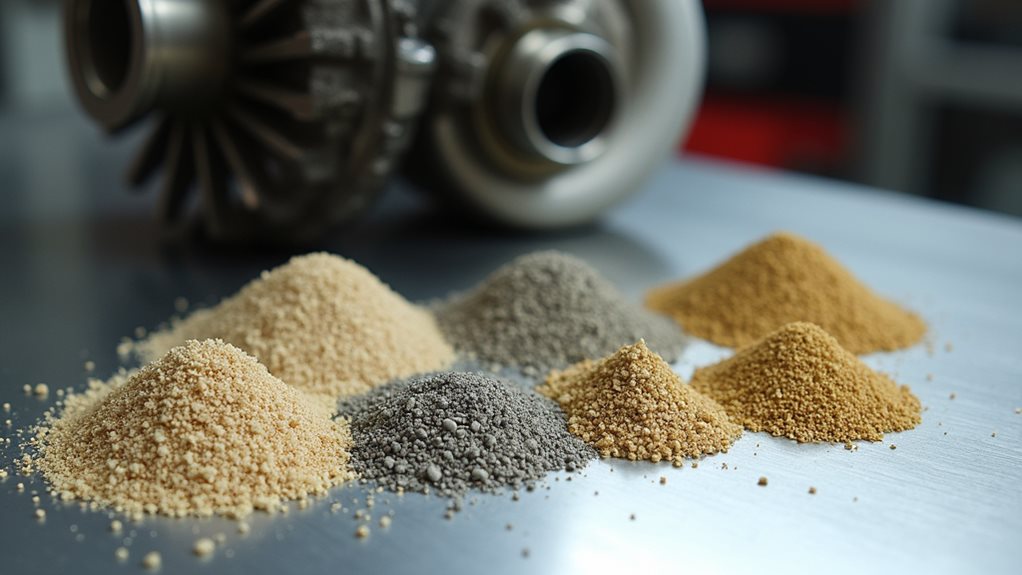
When you’re standing in front of your turbocharger with cleaning grit in hand, remember that choosing the right size isn’t just about grabbing whatever’s available – it’s about matching your specific turbocharger design with the actual carbon buildup you’re facing, because I’ve learned the hard way that using #8 grit on delicate compressor wheels can turn a simple cleaning into an expensive replacement job.
You’ll need to assess whether you’re dealing with light surface deposits that respond well to finer grits like #16 or #20, or stubborn, thick carbon layers that require the aggressive action of coarser #10 grit to break through effectively.
The key lies in understanding that smaller turbochargers with precision-machined components demand gentler treatment, while larger marine engines can handle more aggressive grit sizes without compromising their robust construction.
Turbocharger Type Considerations
Although each turbocharger manufacturer has its own quirks and preferences, you’ll find that selecting the right marine grit size becomes second nature once you understand the relationship between turbo design and carbon buildup patterns.
Different turbocharger types respond uniquely to specific grit sizes, and honestly, I’ve learned this the hard way through trial and error 😅.
Large commercial turbos typically handle coarser marine grit better, while smaller units require gentler approaches for effective cleaning without compromising component integrity.
You’ll want to check manufacturer recommendations first, as they’ve tested cleaning efficiency extensively.
Carbon Deposit Assessment
Start by examining the severity of your carbon deposits through visual inspection and performance monitoring data.
Light, powdery buildup calls for finer grits around #20, while thick, stubborn accumulations need coarser #10 options for effective cleaning.
Your turbocharger’s recent performance history tells the whole story, guiding you toward the right maintenance approach that’ll preserve those delicate components while achieving thorough results.
Grit Size Matching
Three critical factors determine your grit size selection: the turbocharger’s design specifications, the severity of carbon buildup, and the manufacturer’s recommended maintenance protocols.
You’ll want to match your marine grit carefully because, trust me, I’ve seen technicians learn this lesson the hard way when turbine blades got damaged from improper sizing.
Here’s your matching strategy:
- Light carbon buildup – Use finer grit (#16-#20) for gentle carbon removal
- Moderate deposits – Select medium grit (#12-#14) for balanced cleaning efficiency
- Heavy accumulation – Apply coarser grit (#8-#10) for aggressive maintenance
- Delicate components – Always defer to manufacturer specifications regardless of buildup severity
Alternative Grit Materials and Size Requirements
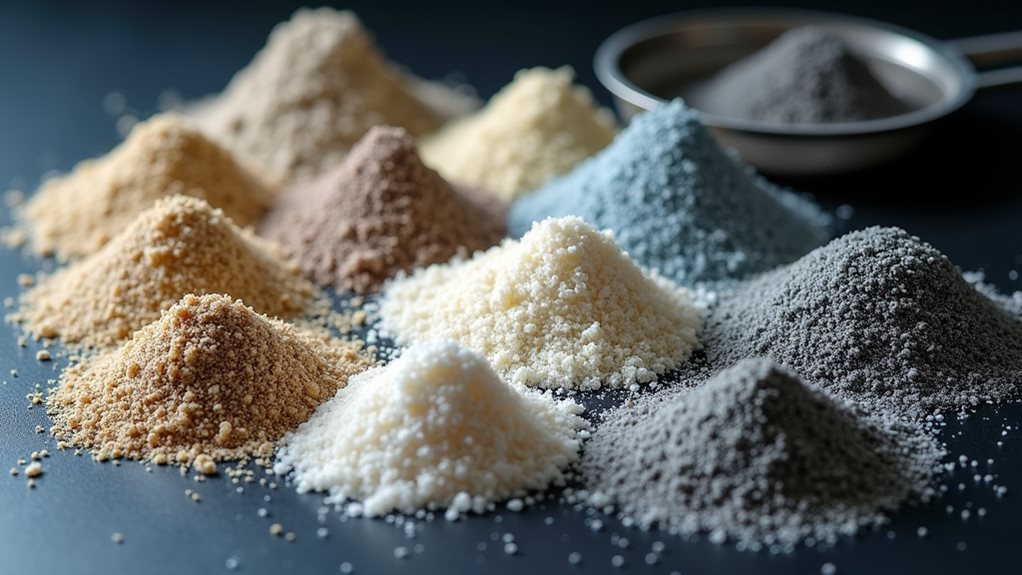
When you’re standing in front of a fouled turbocharger at 2 AM in the middle of the Pacific, you’ll quickly discover that marine grit isn’t always sitting conveniently in your supply locker, and that’s when understanding alternative materials becomes your lifeline.
I’ve watched engineers panic in these moments, but here’s what seasoned professionals know: walnut shell grit has become the gold standard alternative, offering effective cleaning without scratching delicate components.
In true emergencies, you can even use properly sieved broken rice grains – though I’ll admit, explaining that to the chief engineer requires some finesse 😅.
Whatever alternative materials you choose, remember that size requirements remain non-negotiable; inconsistent particle sizes will compromise carbon removal efficiency and potentially damage your turbocharger.
Manufacturer Specifications and IMPA Code Classifications
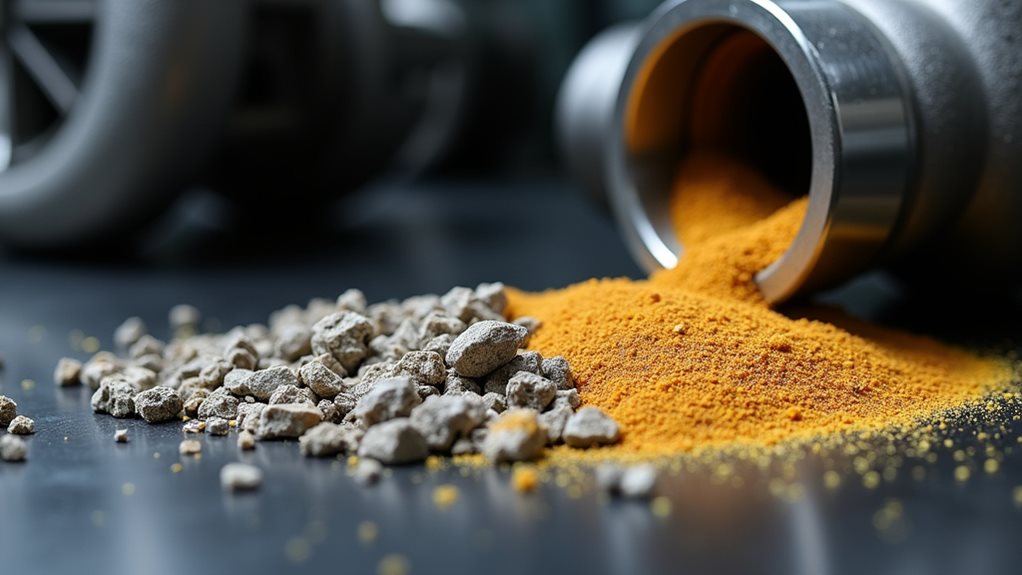
Although marine grit might seem like a simple commodity, I’ve learned through countless supply chain headaches that understanding manufacturer specifications and IMPA codes can save you from ordering disasters that’ll have you explaining to management why your turbocharger maintenance just got delayed by three weeks.
When you’re sourcing marine grit for turbocharger dry cleaning, manufacturer specifications become your roadmap to ideal performance.
Here’s what you’ll need to track:
- Grain sizes ranging from #10 to #20 with diameters between 2.830μm to 840μm
- IMPA code classifications for streamlined ordering (like nominal grain #8’s code 232978)
- Carbon particle removal effectiveness ratings for your specific turbocharger model
- Material compatibility specifications to prevent equipment damage
These standardized codes eliminate guesswork, guaranteeing you’re getting exactly what your equipment needs.
Size Range Impact on Cleaning Effectiveness and Equipment Safety
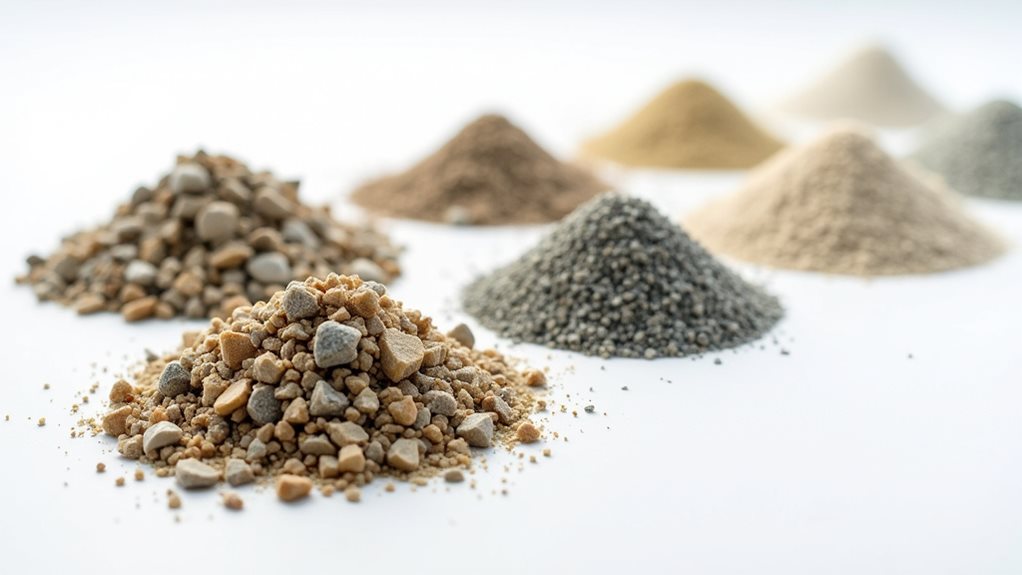
Since discovering the hard way that “close enough” doesn’t cut it in marine maintenance, I’ve become obsessed with how grit size directly determines whether you’ll achieve spotless turbocharger components or accidentally turn precision-engineered turbine blades into expensive scrap metal.
Marine grit ranging from #10 to #20 offers different cleaning effectiveness levels, with ideal grit like nominal grain #8 providing that sweet spot between thorough carbon deposits removal and equipment safety.
Smaller sizes penetrate tight spaces brilliantly, while larger ones deliver aggressive cleaning action that’ll make stubborn deposits disappear.
You’ll find that proper grit size selection dramatically impacts your cleaning speed and efficiency, guaranteeing those fine carbon particles don’t cause unstable rotation while protecting your wallet from costly turbocharger replacements.
Quality Standards and Moisture Content Requirements for Marine Grit
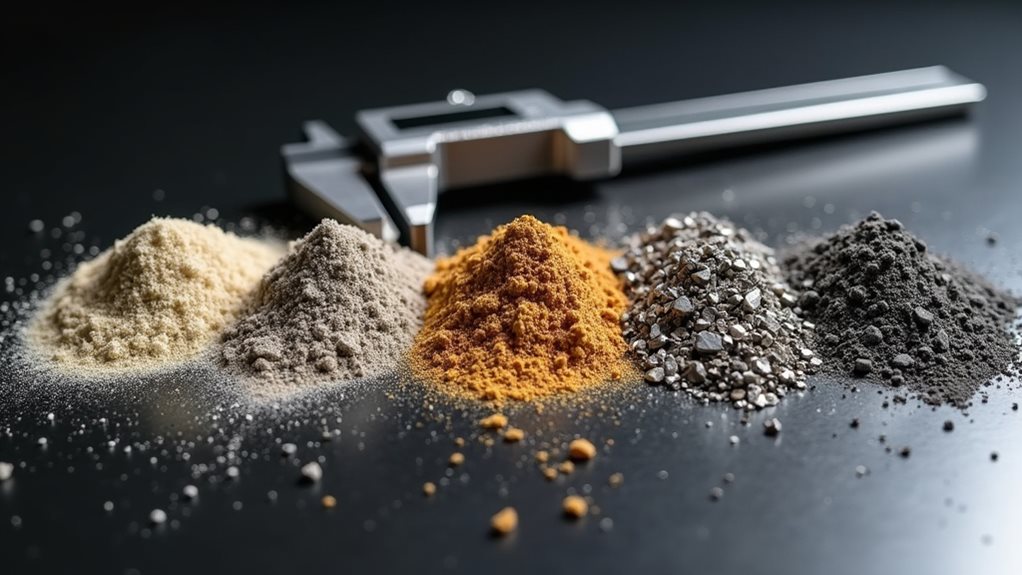
While watching a maintenance crew struggle with clumped, moisture-laden grit that refused to flow properly through their cleaning equipment, I learned that marine grit quality standards aren’t just bureaucratic paperwork—they’re the difference between seamless turbocharger maintenance and a frustrating day of equipment jams and subpar cleaning results.
You’ll want marine grit that meets these crucial quality standards:
- Moisture content below 11% to prevent clumping during turbocharger cleaning operations
- Soft enough composition to avoid scratching delicate turbocharger components while removing stubborn carbon scale
- Consistent grain sizes within specified ranges for predictable cleaning performance
- Environmentally safe materials that won’t pollute when disposed of properly
Trust me, investing in quality marine grit saves you countless headaches and guarantees your turbocharger cleaning delivers the results your engine deserves.

